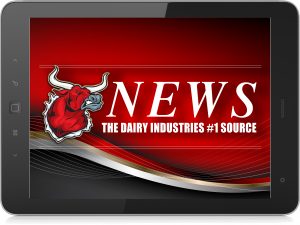
Examining the potential benefits of the biotechnology tool at the annual meeting of the American Association for the Advancement of Science (AAAS), University of California, Davis professor and biotechnology expert Dr. Alison Van Eenennaam said genome editing can enable animal breeds to bring about beneficial genetic changes without unwanted, potentially harmful ones.
Breeding Hornless Cows
The animal scientist discovered the potential of splicing the “hornless” gene from the Aberdeen Angus cow into the prevalent black-and-white Holstein dairy cows for the purpose of eliminating their protrusions.
Horned cattle are deemed potentially risky for their handlers, other stock, and the public. Without such horns, cows are considered easier to pack into their pens as well as in trucks, something estimated to save the livestock industry in the United Kingdom millions of pounds every year.
Few breeds including the Angus and Hereford are born without horns. Most dairy cows then undergo a painful dehorning process while they are still calves.
Potential Benefits For Food Animals
Van Eenennaam looked to the dairy industry to emphasize the potential value of gene editing in livestock production. A glass of milk these days, she said, is linked to a mere one-third of greenhouse gas emissions needed to produce the same in the 1940s, thanks to headways in traditional breeding practices.
Through conventional selective breeding, dairy cows’ productivity are believed to have improved despite the number of U.S. dairy cows dropping from 25.6 million in 1944 to around 9 million at present. The country experiences a 1.6-fold climb in total milk production, argued the scientist.
“A number of breeding methods, including artificial insemination, embryo transfer, crossbreeding and, more recently, genomic selection, have been used to achieve these improvements,” said Van Eenennaam in a statement, adding that gene editing could complement such techniques by introducing desirable traits into the breeding initiatives.
Gene editing is already being used for disease prevention in livestock, such as making pigs immune to porcine reproductive and respiratory virus. In the future, it is also deemed possible for farm animals to produce offspring of only a specific gender, including hens for their eggs.
Regulatory Issues
One, however, shouldn’t count on genetically designed hornless cows anytime soon, as regulators have not approved genetically engineered animals’ entry into the food chain. The possibility of applying these genome-editing methods, according to Van Eenennaam, still rests on future regulatory decisions.
She clarified that gene editing won’t transfer novel DNA into the animals, but instead can perform tweaks within their genes. The resulting DNA sequence may be identical to the natural existing DNA sequences.
Gene Editing: Recent Developments
In China, researchers recently claimed that they have successfully genetically modified cows to be resistant to bovine tuberculosis.
Also recently, the battle over the patent to gene-editing breakthrough CRISPR came to an end as Cambridge-based Broad Institute retained lucrative rights to the technology. CRISPR has garnered such massive attention with its precision in editing letters in an organism’s DNA, much like a pair of molecular scissors.
It could lead the way to new treatments and disease cures but has also received ethical questions such as in the matter of altering the human embryo.
Some experts believe we should go slow on this gene editing technique, as it could make permanent changes in the human genome that might be passed on to a person’s offspring.
Source: Tech Times











